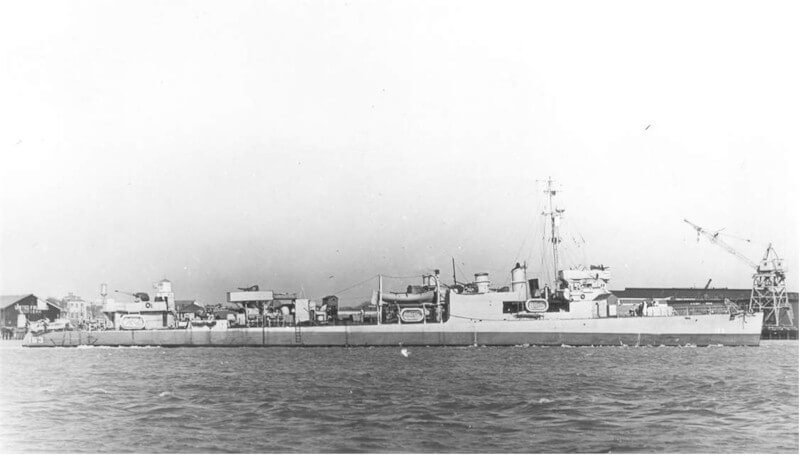Asbestos Exposure on the USS Bernardou

Hull Number: DD-153
Type: Destroyer
Class: Wickes
Built: Philadelphia, PA
Built by William Cramp & Sons at the company’s Philadelphia, PA shipyard around and shortly after the end of World War I, the USS Bernadou was a Wickes-class Destroyer commissioned by the U.S. Navy in May of 1919. The ship measured just over 314 feet fore to aft, and carried a complement of 122 officers and enlisted men.
It began its service as part of the Atlantic Fleet and patrolled the eastern seaboard for three years before being placed into reserve in 1922. It remained out of service for the next eight years, but was returned to active duty in May of 1930.
During World War II, the ship earned five battle stars, as well as a Presidential Unit Citation for its efforts to land troops inside the harbor of Safi in French Morocco. The ship served through the end of the war, and was decommissioned shortly after its end, in July 1945.
Asbestos was commonly found on Navy ships built during the time of the USS Bernadou’s construction. From between the 1930’s to about the mid-1970’s, nearly every ship in the fleet used asbestos in a great deal of equipment.
Boilers, turbines, pumps, valves, and electrical components all were made with asbestos, while materials such as gaskets and packing were often wholly made from asbestos. Boiler Tenders, Machinist’s Mates, and others who worked in the boiler and engine spaces faced asbestos exposure on a daily basis, due to the extreme concentrations of asbestos dust below deck and poor ventilation.
The companies who provided the Navy with these asbestos products were generally aware that asbestos could cause mesothelioma and other illnesses, but did nothing to warn those who served on the USS Bernadou or its contemporaries. This resulted in Navy veterans developing mesothelioma at a rate well above that of the general population.
Victims of asbestos who served aboard the USS Bernadou or other Navy ships from this era have a right to seek compensation. The high costs of medical care can often be offset or covered entirely by settlements, and additional sums may be granted for pain and suffering. The law places limits on the time in which a lawsuit may be filed, so it is important to contact legal counsel soon after a mesothelioma diagnosis is made.
